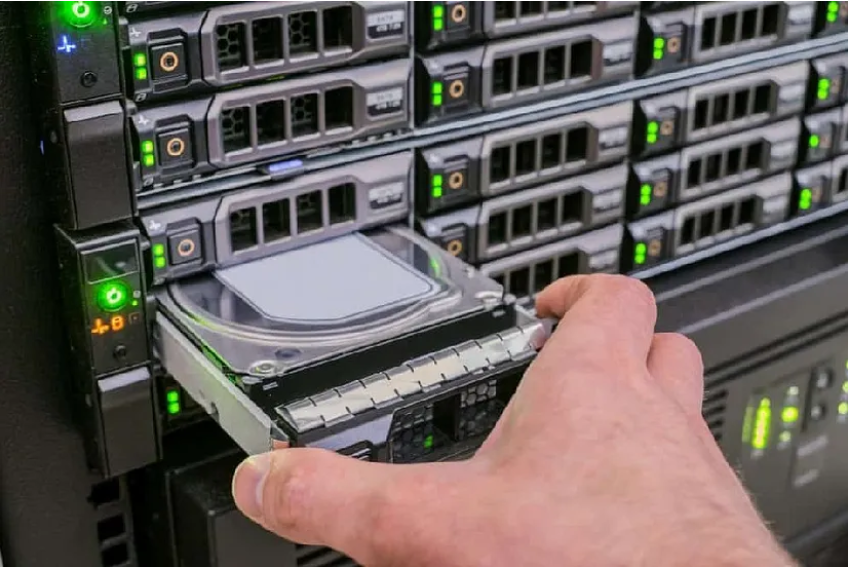RAID 5 is a popular storage configuration that strikes a balance between performance, capacity, and data redundancy. By utilizing a combination of data striping and parity, RAID 5 can significantly enhance system performance while providing fault tolerance. This article will explore hidden features of RAID 5 that can potentially boost your system performance by up to 90% through simple steps.
Understanding RAID 5
RAID, which stands for Redundant Array of Independent Disks, is a technology that combines multiple disk drives into a single unit to improve performance and provide redundancy. RAID 5 requires a minimum of three drives and employs data striping with parity. In this setup, data is distributed across all disks, and parity information is calculated and stored to allow for data recovery in case of a drive failure.
Key Features of RAID 5
- Data Striping: RAID 5 splits data into blocks and distributes them across multiple drives. This allows simultaneous read and write operations, enhancing performance, especially for read-intensive applications.
- Parity: Parity information is stored across all drives, allowing the system to reconstruct data from a failed drive. This feature provides fault tolerance, making It a reliable choice for critical data storage.
- Hot Swapping: it supports hot swapping, meaning you can replace a failed drive without shutting down the system. This minimizes downtime and maintains system availability.
- Capacity Efficiency: It uses the equivalent of one drive’s capacity for parity, allowing for efficient use of storage space. For example, in a five-drive RAID 5 array, if each drive is 1TB, the usable capacity is 4TB.
Boosting Performance with RAID 5
While RAID 5 already offers considerable performance benefits, there are several hidden features and optimizations that can further enhance its efficiency. Here are some steps to potentially boost your RAID performance by 90%:
1. Optimize Disk Configuration
The performance of RAID 5 is directly correlated with the number of drives in the array. Adding more drives can significantly improve read speeds, as data can be accessed from multiple disks simultaneously. However, it is essential to balance the number of drives with the need for redundancy. A common recommendation is to use an odd number of disks to optimize parity distribution.
2. Use High-Performance Drives
Investing in high-performance drives, such as SSDs or enterprise-grade HDDs, can drastically improve RAID 5 performance. SSDs, in particular, offer faster read and write speeds, reducing latency and enhancing overall system responsiveness.
3. Implement a Larger Block Size
Adjusting the file system’s block size can also impact performance. A larger block size (e.g., 64KB instead of the default 4KB) can reduce the overhead associated with managing smaller blocks, particularly for large files. This change can lead to improved write performance, as fewer operations are needed to write the same amount of data.
4. Enable Write Caching
Write caching can enhance RAID 5 performance by temporarily storing write operations in memory before committing them to disk. This allows the system to process multiple writes simultaneously, improving throughput. However, it is crucial to have a battery backup unit (BBU) to protect data in case of power loss.
5. Optimize RAID Controller Settings
Many RAID controllers offer settings that can be adjusted for optimal performance. For instance, enabling features like “Write Back Cache” or “Strip Size” can lead to significant improvements in data handling. Consult your RAID controller’s documentation for specific optimization options.
6. Monitor and Maintain the Array
Regular monitoring of the RAID array can help identify performance bottlenecks and potential issues. Tools that provide insights into disk health, I/O operations, and overall performance can help you make informed decisions about upgrades or changes to your configuration.
7. Consider RAID 50 or RAID 10
For environments with high I/O demands, consider implementing RAID 50 or RAID 10 configurations. RAID 50 combines the benefits of RAID 5 and RAID 0, providing both redundancy and enhanced performance. RAID 10, on the other hand, offers excellent redundancy and performance but requires more drives. They can significantly enhance overall system performance.
Conclusion
RAID 5 is an effective solution for balancing performance, capacity, and redundancy in data storage. By leveraging its inherent features and implementing the optimization strategies discussed, users can potentially boost their system performance by up to 90%. Whether through optimizing disk configurations, using high-performance drives, or adjusting RAID controller settings, these simple steps can lead to significant enhancements in data handling and system responsiveness. As data storage needs continue to grow, understanding and maximizing the capabilities of It will remain essential for both personal and professional applications.

